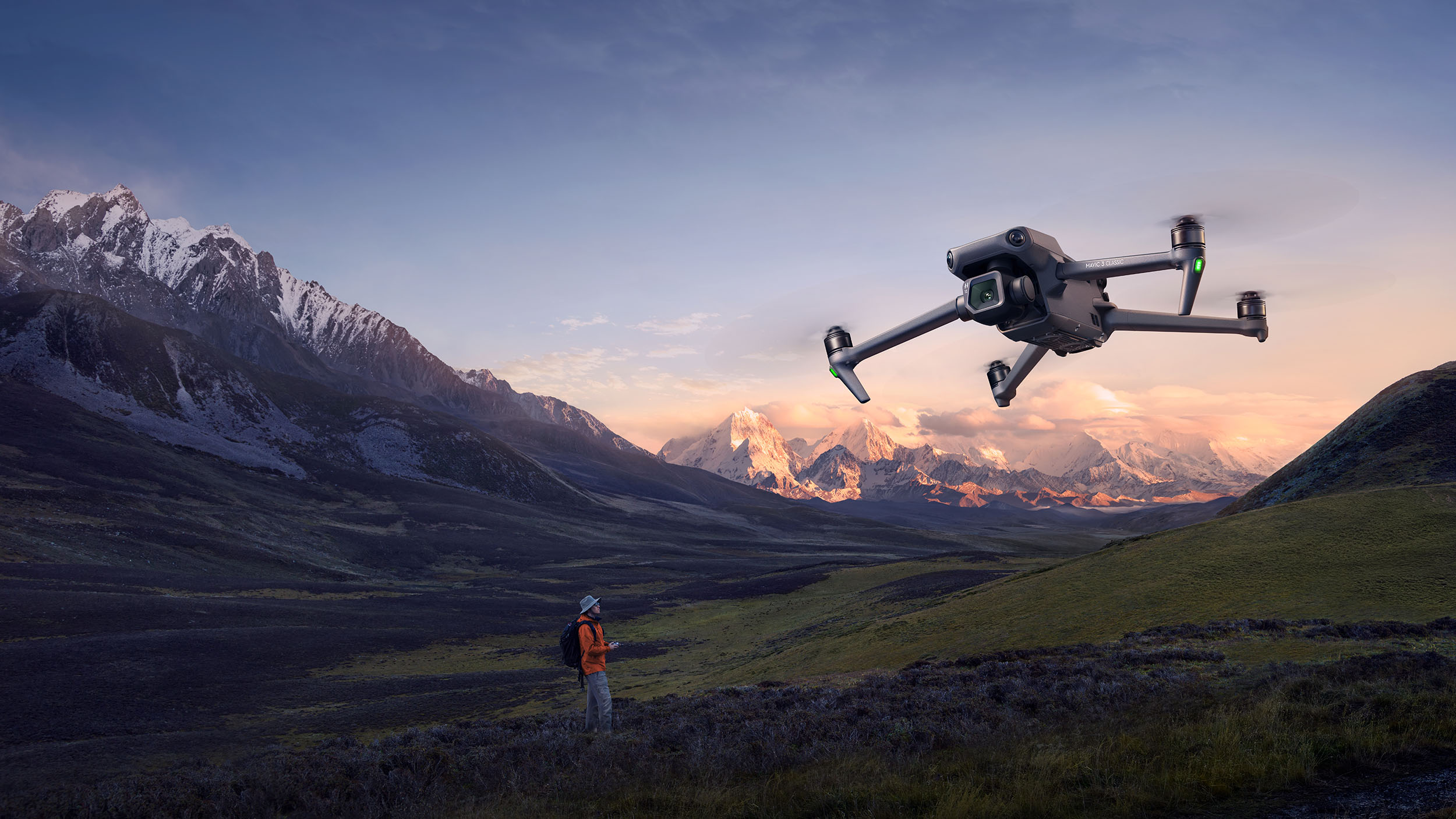Embark on a thrilling journey into the realm of GPS drones, where cutting-edge technology meets the boundless skies. In this comprehensive guide, we unravel the intricacies of GPS-enabled drones, offering a detailed exploration of their features, functionalities, price, and the transformative impact they’ve had on the world of aerial video, photography, video, and exploration.
Whether you’re a novice drone enthusiast or a seasoned drone pilot, join us as we navigate through the essential aspects of the GPS drone itself, unveiling everything you need to know to elevate your drone experience to new heights.
When exploring potential additions to our drone fleet, one of the initial and crucial features I prioritize is the GPS capability. In this blog, I will showcase some of the top-performing GPS drones available in the market, emphasizing their excellence in both GPS functionality and automated return-to-home technology.
I will delve into the reasons behind the success of these compact GPS drones with reliable return-to-home features, emphasizing how they contribute significantly to enhancing the priority of safety records and the overall success of drone flights.
What Is A GPS Drone?
Drones featuring GPS technology incorporate an internal GPS module that enables precise positioning by interfacing with a network of orbiting satellites. Leveraging signals from these satellites, these drones create various functions, including accurate positioning, autonomous flight capabilities, seamless return-to-home maneuvers, and precise waypoint navigation.
How Do GPS Drones Work?
The GPS module functions by receiving signals from a network of orbiting satellites. These signals, transmitted by the satellites and captured by the GPS module through radio receivers, enable the module to calculate its precise position, velocity, and time. The accuracy of the GPS drone‘s GPS-related operations is directly influenced by the availability of signals from multiple satellites and systems. Access to a broader range of signals enhances positioning accuracy, thereby optimizing all GPS-related functionalities of the drone.
How Much Is A GPS Drone?
For individuals brand new to drone flying, the focus might be on the price and enjoyment of the experience. This choice of price quite often boils down to opting for toy drones or standard consumer drones. The price and affordability of toy drones and consumer drones pose a challenge in integrating GPS modules due to their lower cost. Generally, drones fitted with GPS modules start to price at a price of around $200 and above.
Do I Need A Drone With GPS?
For drone flight enthusiasts, the necessity of having a GPS-enabled drone hinges on their specific objectives. Once individuals delve into the world of drone flight, their preferences often evolve. Drones featuring GPS modules can enhance overall performance and expand usability across various scenarios, making them a preferred choice for many drone pilots.
Flight Stability
Incorporating GPS into your drone enhances stability during flight. The GPS enables the quadcopter to fly to achieve a stable hover, automatically correcting its position if it deviates from the camera and original location. This ensures that the drone consistently returns to the mid-air starting point.
This stability extends to windy conditions as well. In situations with light winds, GPS plays a crucial role in flight control, helping the drone fly and maintain a smoother and more stable course by accurately identifying its position and making real-time adjustments.
Altitude Hold
Novice drone users may find it challenging to practice altitude control. Drones fitted with GPS technology address this issue by accurately determining the altitude, holding the drone’s location, and allowing for the presetting of altitude limits in the flight control system. Autel’s beginner mode leverages this principle by restricting the altitude to 30 meters, providing a user-friendly approach to altitude management for those new to drone flying.
DJI Mavic Pro 3 | Ultimate GPS Drone
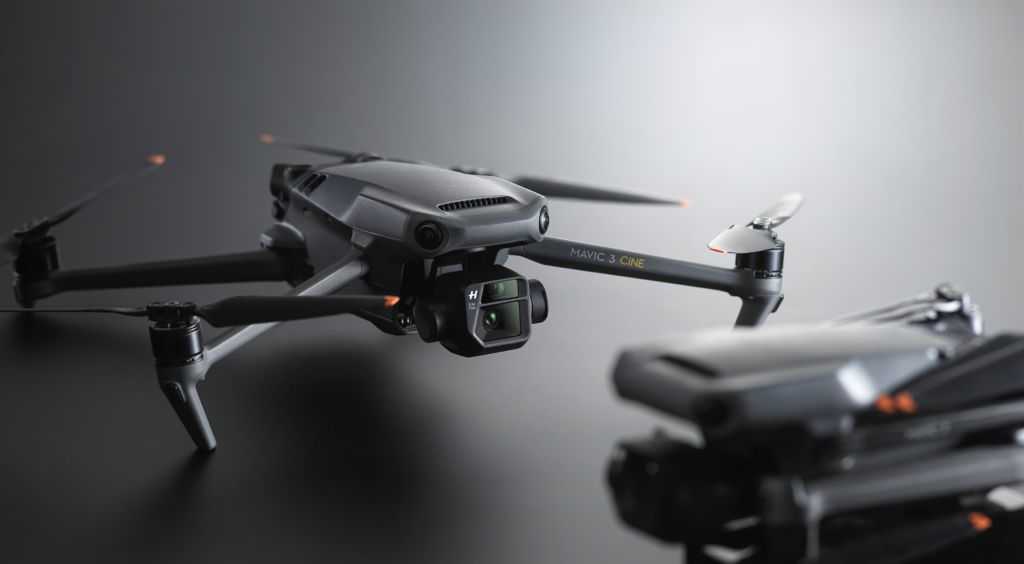
In terms of GPS functionalities and automated return-home capabilities, the DJI Mavic 3 Pro emerges as a standout among the best GPS drones featuring top-notch GPS and return-home features.
Through thorough testing, I can assert with confidence that, in 2023, the Mavic 3 Pro stands as one of the premier GPS-enabled drones. Its precision is owed to a highly accurate and dependable GPS. Rapidly connecting to multiple satellite networks, it consistently identifies the top drone’s precise location, ensuring top drones’ smooth and stable flights—a crucial element for top drones effectively employing the return-to-home feature. Record flights are significantly enhanced with this level of precision
One of the first things I noticed about the Mavic 3 Pro is how quickly it establishes a GPS connection.
This established home point serves as the designated destination when activating the return-to-home feature, constituting a straightforward and efficient system for drones with return-to-home functionality.
My firsthand experience attests to the Mavic 3 Pro’s GPS precision, even during extended flights. Maintaining a consistently accurate lock on the drone’s position is crucial for operational efficiency and safety alike. Altitude hold during flights further emphasizes the reliability of the GPS.
The GPS capabilities also enable geofencing, preventing the drone from entering restricted airspace, thereby adding an extra layer of protection and ensuring compliance with regulations in controlled environments. Furthermore, the precise GPS feed empowers the Mavic 3 Pro to deploy advanced features such as Cruise Control, Quickshots for video, and Focus Track for subject tracking and obstacle avoidance. The intelligent use of GPS enhances overall functionality. GPS drone records are significantly improved with these features.
Now, delving into the return-to-home capability of consumer drones, it stands out as one of my favorite automated features on this drone. Offering a valuable level of autonomy and many safety features, the Mavic 3 Pro excels as one of the best drones with an excellent GPS and a reliable return-to-home function.
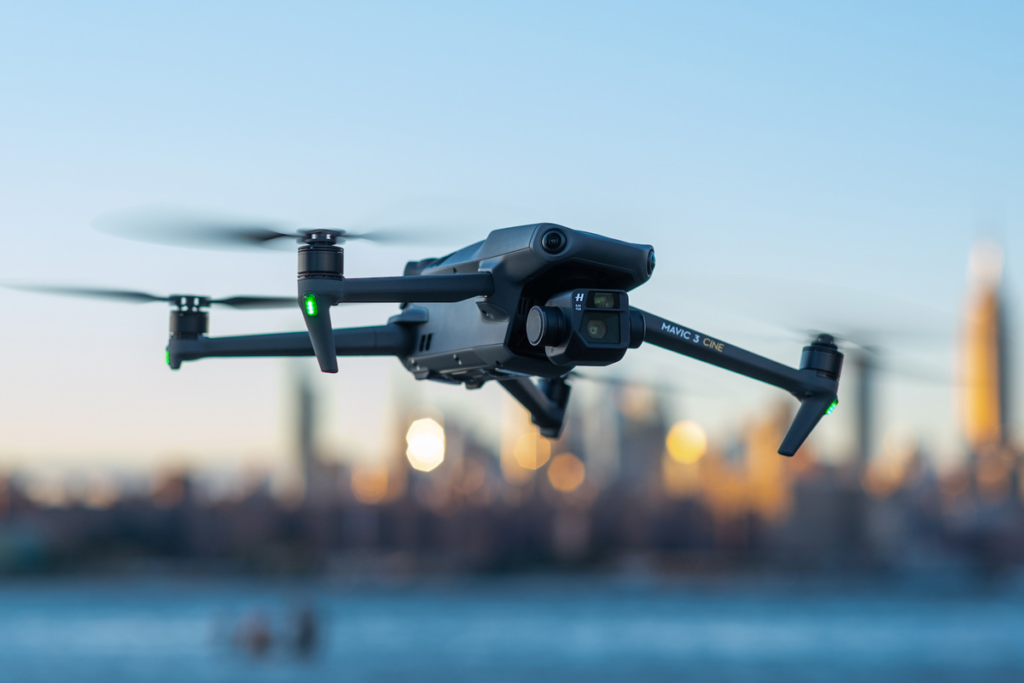
Initiating the return home function on the Mavic 3 Pro can be done in various ways, providing flexibility and control to users. Manual activation using the remote control or controller is an option, and the function can also kick in automatically in specific situations like low battery or signal loss.
Upon activation, the drone leverages its precise GPS data to intelligently calculate the safest route back to the recorded home point. This process involves a thorough scan of the surrounding environment within a 200-meter radius. The Mavic 3 Pro identifies obstacles and strategically plans to avoid obstacles and create a clear path home, deftly avoiding any objects in its trajectory.
During return flights, the drone and camera’s advanced sensors and vision systems work in tandem to keep flight time and position the Mavic 3 Pro clear of obstructions, ensuring seamless navigation back to the ground and takeoff point.
The effectiveness of the return home feature on this drone is particularly noteworthy, operating smoothly and reliably to eliminate any guesswork associated with safely bringing back the aircraft.
Adding to its appeal, the Mavic 3 Pro provides users with different return home mode options. This includes choosing between a direct, straight-line path or a more calculated route that skillfully avoids obstacles. Such customization options elevate the GPS drone‘s return home feature to an outstanding level.
In my drone survey business, pilots having confidence in automated smart flight modes and features like return to home is extremely valuable.
It significantly mitigates operational risks and alleviates stress, particularly during mapping missions.
Following numerous test flights, I can confidently affirm that the DJI Mavic 3 Pro stands out as having one of the most exceptional cameras, GPS, and return-home capabilities in the market. It has seamlessly become my preferred workhorse drone.
The precision, speed, and intelligence embedded in the GPS and return home systems distinguish this drone as a technological marvel, simplifying and enhancing the safety of drone flight.
Whether for commercial, governmental, or recreational purposes, the Mavic 3 Pro proves to be an outstanding choice among the best GPS-enabled drones. It sets a new gold standard in automated GPS flight functions.
I wholeheartedly recommend the DJI Mavic 3 Pro, particularly for those who prioritize unwavering GPS performance and intelligent return home technology in a low-cost, low cost enough, drone platform. This drone has not only met but exceeded my expectations, promising to elevate your aerial photography capabilities to new heights.
Autel Evo 2 Pro | Non-DJI Return Home Drone
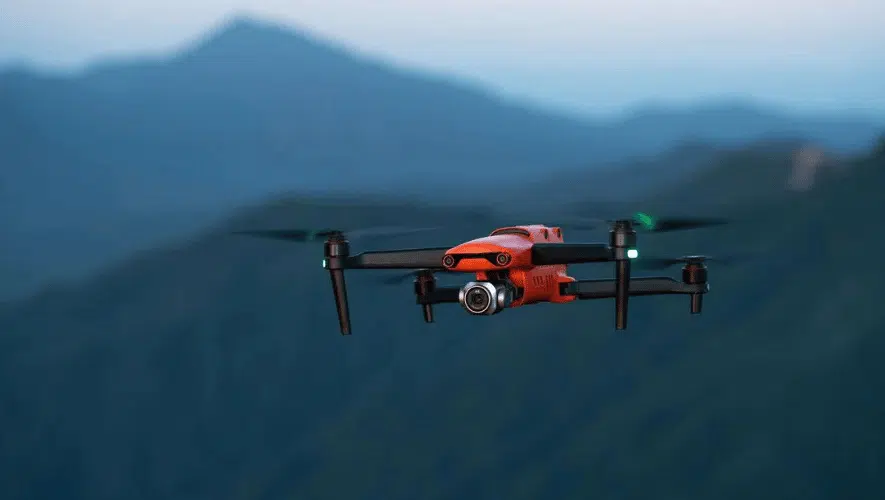
Following extensive testing of various models, I was particularly impressed with the GPS and return home capabilities of the Autel Robotics EVO II Pro, positioning it as one of the finest drones fitted with GPS and a camera currently available.
The EVO II Pro leverages GPS stabilization, enabling it to maintain a very precise hovering hover without any drift. This pinpoint accuracy makes it well-suited for applications such as surveying, mapping, and inspections. Additionally, the drone features an Auto Return Home function, automatically guiding it back to the takeoff point in the event of low battery levels or a lost signal connection.
The incorporation of this failsafe mechanism provides a reassuring sense of security, especially during extended flights over considerable distances.
In my experience, the return home and GPS reliability have been mostly positive. There were a few minor hiccups, with some disconnects from my phone.
Yet, in the majority of flights, the EVO II Pro consistently demonstrated an impressive ability to lock onto locations with exceptional precision.
In terms of image quality of GPS accuracy, I would confidently place the EVO II Pro among the top-tier GPS drones boasting reliable return home features.
The drone’s intelligent flight modes leverage the GPS effectively to create a GPS drone both for video and photo taking. Features like Dynamic Track 2.0 and Tripod Track facilitate object tracking and enhance the smoothness of video and photo capture. These smart flight modes showcase the advanced capabilities of flying this drone, particularly its return home feature, all made possible through GPS-enabled.
To delve into the mechanics of the return home feature, the drone utilizes its built-in GPS module to memorize the takeoff point, ensuring a reliable and accurate return to the designated location.
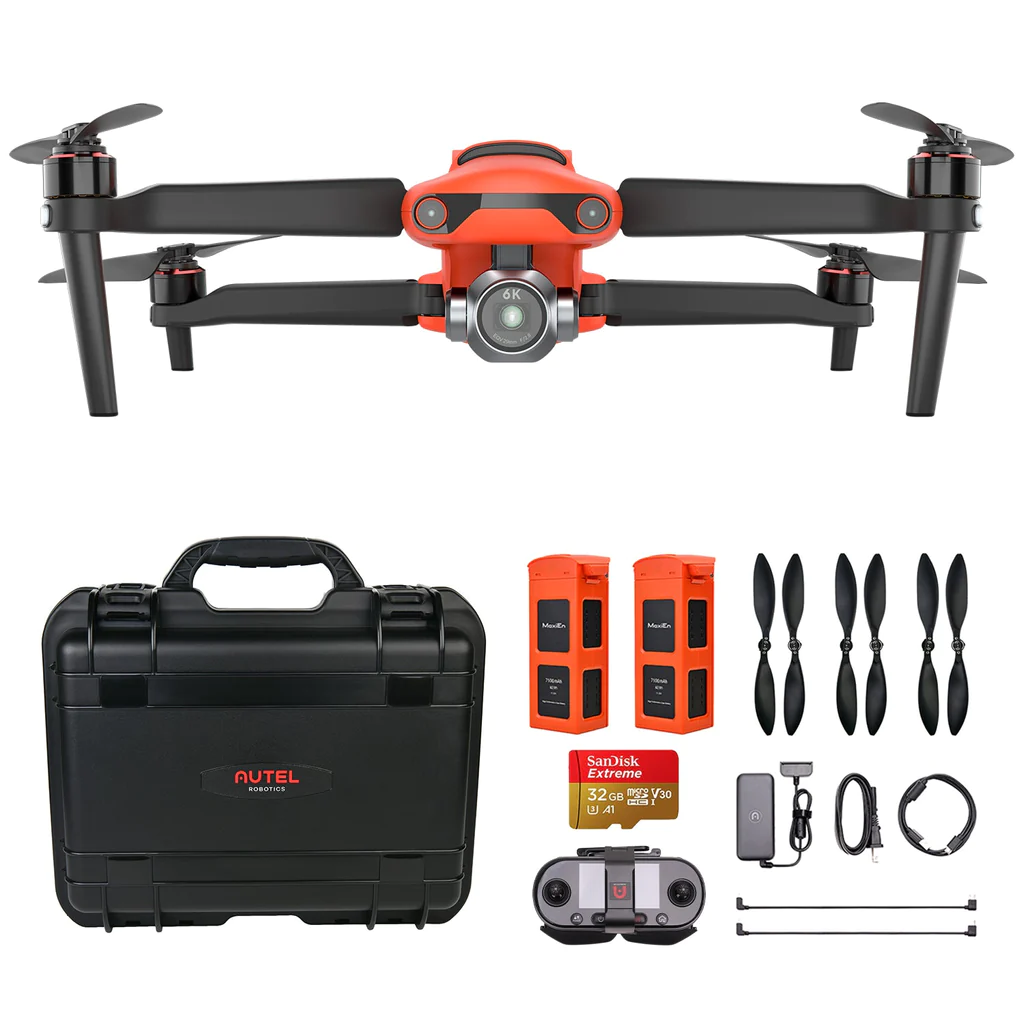
When triggered, either by low battery levels or signal loss, the EVO II Pro adeptly charts a course to fly back to the pilot or home point, ensuring a safe landing. This capability instills in pilots and me the confidence to undertake longer-distance flights for surveying or inspection purposes with this GPS drone.
Even in scenarios where the connection is lost during the return home process, the drone relies on its GPS to navigate back accurately. While I haven’t personally encountered such issues, the GPS satellite positioning acts as a reliable guide in case of emergencies, maintaining the drone on course.
While external interference could potentially influence its flight path, in the majority of cases, the EVO II Pro is expected to successfully return to the takeoff point.
The camera features an impressive maximum range of 15 km, although not recommended to be pushed to its limits during flight time, providing ample working space for surveying tasks. Even operating near this range, the return home feature is designed to activate, ensuring the drone safely returns to the takeoff point. GPS drone capabilities contribute significantly to this reliable and automated return functionality.
A great aspect of the return home feature is that it can be canceled if desired. By pressing and holding the pause button on the remote controller, I can regain manual flight control over the drone and continue the flight plan.
This flexibility allows for manual intervention if necessary.
For my surveying and photogrammetry clients, precise GPS is paramount.
The EVO II Pro excels in this regard, delivering accuracy up to 1.5 cm, courtesy of the GPS, GLONASS, and Galileo satellite positioning systems. The small GPS drone consistently exhibits reliable location stability during data collection, a crucial aspect for professional applications.
This level of GPS precision is indispensable for professional use, meeting the high standards demanded by my clients.
The drone’s object and obstacle avoidance sensors also benefit significantly from its accurate GPS capability. By integrating positioning data with computer vision, the EVO II Pro can both detect obstacles and navigate obstacles in the air from multiple directions, enhancing overall flight smoothness and operational safety.
In conclusion, I wholeheartedly recommend the Autel Robotics EVO II Pro. Its advanced GPS and auto-return features provide the precision and reliability necessary for commercial use. This model has seamlessly become an integral part of my equipment lineup due to its exceptional performance record.
DJI Mini 2 SE | Cheapest GPS Drone 2024
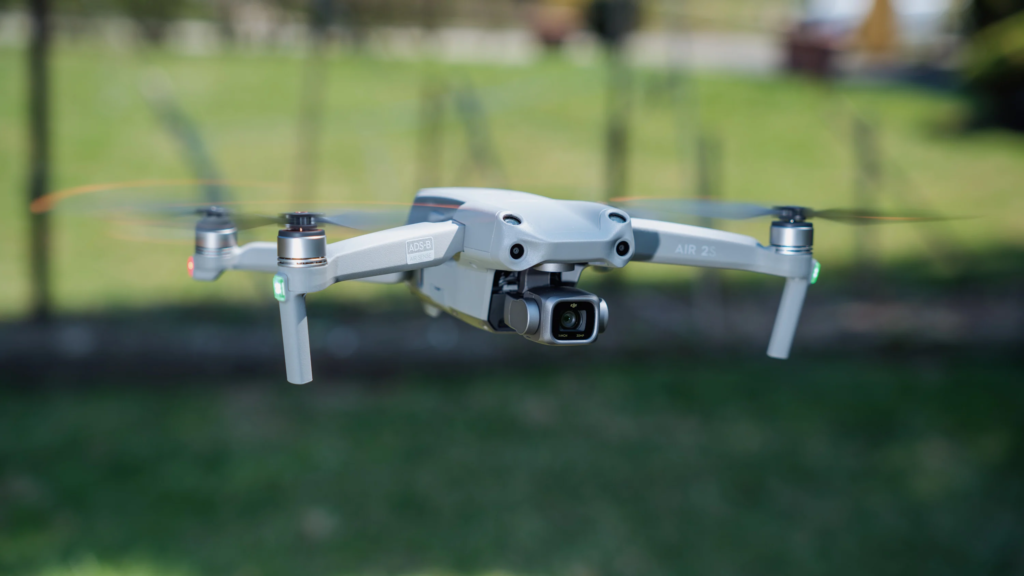
The DJI Mini 2 SE has swiftly become one of my top recommendations for new drone pilots, offering an affordable price and reliable performance as one of the best drones featuring GPS and return-home capabilities. In this review, I will highlight how the Mini 2 SE maximizes the use of GPS and return-to-home technology to ensure a safe and enjoyable flying experience. Despite its budget-friendly price, the Mini 2 SE is fitted with a high-precision GPS module. Through my field tests, I consistently observed its ability to establish a robust GPS lock in under 60 seconds, enabling a stable hover and facilitating navigation back to the takeoff point.
This level of GPS accuracy is reassuring, particularly for beginners, as it minimizes the risk of the drone drifting away in case of orientation loss. It positions the Mini 2 SE as one of the best GPS drones for individuals new to drone flying.
A standout safety feature empowered by GPS is the automated return-to-home function on the Mini 2 SE. Activated with a simple click of the RTH button, the drone retraces its original flight path back to the takeoff location, showcasing reliable return-to-home capabilities.
I have found GPS drones and cameras made with this feature to fly and be highly dependable, even in windy conditions. Additionally, if the drone or camera’s battery level becomes low during flight, it initiates an automatic return-to-home process, ensuring it has sufficient charge to return safely. This auto-return failsafe alleviates concerns for beginners as they familiarize themselves with monitoring flight times.
The Mini 2 SE utilizes a GPS drone in support of various intelligent flight modes as well. For instance, the Point of Interest mode enables the drone to circle a selected object autonomously while keeping the camera focused on the video subject. This feature provides an easy way to capture dynamic video, emphasizing the Mini 2 SE as one of the best drones with camera capabilities.
While lacking object detection sensors, the downward-facing vision sensors on the Mini 2 SE enable precise takeoffs and landings. The GPS contributes to maintaining the camera in position at a steady position close to the ground under favorable lighting conditions.
Weighing just 249 grams, the Mini 2 SE offers exceptional portability.
The GPS integration makes it easy to fly confidently to new locations without worrying about losing orientation.
The DJI Mini 2 SE stands out as one of the best compact GPS drones, making it effortlessly portable for trips.
Despite its full price and small size, the 3-axis gimbal-stabilized camera delivers impressive 2.7K video and 12-megapixel photos. Features like Hyperlight enhance low-light video scenes by leveraging both GPS and visual data.
While lacking full autonomy, the Mini 2 SE includes automated QuickShots modes such as Dronie, Helix, and Rocket, guided by GPS. This adds a cinematic touch that beginners can easily achieve, making it a top choice for drones with auto return features.
For advanced pilots, manual waypoint flying can be enabled by plotting control points through the DJI Fly app. The precise system allows for setting up complex shots with accuracy, establishing the Mini 2 SE as one of the best GPS-enabled drones.
I always emphasize flying below 400 feet and keeping the drone in sight, and the Mini 2 SE’s geofencing reinforces this by indicating warning zones on the map, restricting entry near airports.
While the GPS and return-to-home functions provide peace of mind, responsible flying remains essential—avoiding obstacles, monitoring battery levels, and prioritizing safety should be top priorities when operating any drone with return-home features.
A drawback is the absence of downward-facing obstacle detection sensors, requiring manual avoidance of obstacles like trees and buildings during flight.
While the drone offers a Sport mode for higher speed, I recommend new pilots stick to Normal mode, limiting speed to prevent potential loss of control when farther from the takeoff point.
Even in Normal mode, the Mini 2 SE boasts a respectable max ascent and descent speed of 16 meters per second, enabling the capture of dynamic shots from creative vantage points.
In conclusion, the DJI Mini 2 SE impresses with its GPS integration and reliable return-to-home capabilities, all at a budget-friendly price point. It caters to newcomers seeking confidence and capable flight, positioning itself as one of the best drones with auto-return functionalities.
If you’re willing to sacrifice some premium features for a budget-friendly price, the Mini 2 SE has the core essentials covered. The GPS and return to home alone are worth the investment for peace of mind and safety when buying one of the best drones with return home features.
Do drones have built-in GPS?
Yes, many drones come fitted with built-in GPS (Global Positioning System) technology. This GPS functionality allows drones to determine their precise location, enabling features such as accurate navigation, stable hovering, and automated automatic homecoming capabilities. GPS is a crucial component in enhancing the overall performance, safety, and functionality of drones GPS.
What is the best GPS drone?
Determining the “best” GPS dronе depends on specific needs and preferences. However, as of my last knowledge update in January 2023, popular options include the DJI Mavic 3 Pro, known for its advanced GPS features, obstacle avoidance, and high-quality camera. Autel Robotics EVO II Pro is another notable choice, offering аccuracy GPS, impressive camera capabilities, and obstacle avoidance. For a budget-friendly option, the DJI Mini 2 SE stands out with reliable GPS features and portability. It’s recommended to consider factors like camera quality, flight features, and budget to determine the best GPS drone for individual requirements.
How do I choose a GPS for my drone?
Choosing a GPS for your drone involves considering several factors. Look for a GPS module compatible with your drone model and fitted with multiple satellite system support (GPS, two GLONASS satellites, Galileo) for enhanced accuracy. Consider the update rate and acquisition time of the GPS for faster and more precise positioning. The GPS should integrate seamlessly with your drone’s flight controller and be capable of supporting features like automatic homecoming and waypoint navigation. Additionally, assess the weight and size of the GPS module to ensure it fits your drone’s specifications without compromising performance.
Can a drone track you?
Yes, many modern drones are fitted with tracking features that allow them to follow and track a subject. This is often achieved through technologies such as GPS, computer vision, or a combination of both. The tracking functionality enables the drone to autonomously follow a person or object, keeping it in the frame and maintaining a specified distance or angle. This feature is commonly used for capturing dynamic and cinematic shots, as well as for various applications like sports filming, photography, and surveillance. It’s important to note that the effectiveness of tracking capabilities can vary among different drone models and their respective tracking technologies.
Which drones have GPS?
Many drones on the market come fitted with GPS (Global Positioning System) capabilities. Some popular models with built-in GPS include the DJI Mavic Air 2, DJI Phantom 4 Pro V2.0, DJI Mini 2, Autel Robotics EVO Lite+, and Skydio 2, among others. The integration of GPS in drones enables features such as precise positioning, waypoint navigation, automated automatic homecoming, and intelligent flight modes. When selecting a drone with GPS, it’s essential to consider your specific needs, budget, and the intended use of the drone to ensure it meets your requirements.
What is the best drone with a camera and GPS?
Determining the best drone with a camera and GPS depends on specific needs and preferences. As of my last knowledge update in January 2022, the DJI Mavic Air 2 is often considered among the very top drone choices, featuring a high-quality camera, intelligent flight modes, and reliable GPS capabilities. The DJI Phantom 4 Pro V2.0 is another notable option, known for its advanced camera and robust GPS features. Additionally, the Autel Robotics EVO Lite+ and Skydio 2 are worth considering for their camera capabilities and GPS integration. It’s recommended to assess factors like camera specifications, flight features, and budget to determine the best drone for individual requirements.
Drones With GPS Explained
Drones utilize a Global Positioning System (GPS) module to accurately determine the drone’s precise latitude, longitude, and altitude anywhere on Earth. By triangulating the drone’s location using satellites, the GPS enables stable hovering, precise trajectory following, and the recording of the takeoff point. Air records are significantly improved with the help of GPS technology.
What Happens With Drones Don’t Have GPS
A drone’s GPS depends on precise positional information, allowing it to lock onto a fixed point in the sky and achieve a stable hover. In the absence of GPS, a drone lacks a reliable reference point, forcing it to resort to less accurate methods to maintain a fixed position. Without GPS, a drone relies on its onboard sensors such as gyroscopes and accelerometers to attempt “stationary flight.” However, these sensors can experience drift over time, resulting in an unstable hover and necessitating continuous pilot inputs to maintain stability.
It becomes extremely difficult to maintain a precise hover in one place without GPS assistance
Beyond an unstable hover, a drone lacking GPS assistance faces limitations in its ability to return home automatically. The return-to-home function relies on GPS coordinates to navigate back to the takeoff spot in case of signal loss. When relying solely on onboard vision or infrared positioning sensors, a drone may drift with even slight winds due to the absence of an accurate GPS position lock.
Furthermore, obstacle avoidance features are compromised without precise positional data. While drones can technically fly without GPS, it demands heightened skill and concentration from the pilot. Basic autonomous functions like follow me, waypoints, and orbit modes are typically unavailable without GPS positioning.
Drones operating without GPS access are more challenging to aviators smoothly, lack automated flight capabilities, cannot autonomously return home, and exhibit diminished safety features. GPS plays a crucial role in providing essential positioning data for user-friendly, stable, and safe drone flight.
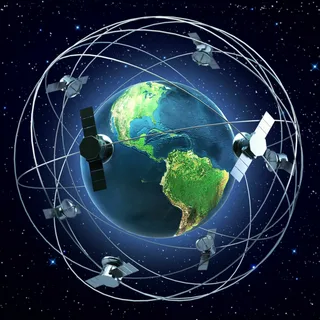
How Satellite Networks Give GPS Drones Return to Home Capabilities in 2024
Leading drones with GPS and return-to-home capabilities predominantly rely on satellite systems such as the American NAVSTAR GPS, Russian GLONASS, European Galileo, and Chinese BeiDou constellations for position triangulation. Each constellation comprises approximately 24-30 satellites orbiting the Earth, continually transmitting signals. The optimal GPS-equipped drones leverage these signals from satellites to facilitate accurate related searches and automated return functionalities.
NAVSTAR GPS
The NAVSTAR GPS constellation, initiated in 1995, marked the inception of the first fully operational Global Navigation Satellite System (GNSS). Comprising 31 active satellites positioned in medium earth orbit, GPS was initially developed by the United States military but later made available for civilian use. Today, it stands as the most extensively utilized satellite navigation system, particularly in the top drones equipped with GPS on a global scale.
GLONASS
GLONASS, which stands for Global Navigation Satellite System, serves as Russia’s equivalent to the U.S. GPS. Attaining complete global coverage in 2011, GLONASS offers an alternative satellite navigation system. With 24 satellites in its constellation, GLONASS provides precision comparable to GPS, making it a viable option for drones equipped with return-to-home features.
Galileo
Galileo stands as Europe’s global navigation satellite system, developed through collaboration between the European Union and the European Space Agency. Upon completion, the Galileo system will comprise 24 operational satellites within a constellation of 30. Renowned for its enhanced accuracy, Galileo surpasses GPS and GLONASS in precision, particularly on drones equipped with auto return features.
BeiDou
China operates the BeiDou navigation satellite system, which currently comprises 40 satellites. BeiDou is frequently employed in conjunction with GPS, especially on drones with GPS tracking manufactured by companies like DJI and other Chinese drone makers. In the realm of top drones equipped with both GPS and camera capabilities, a prevalent trend involves the utilization of dual-band GPS receivers. These receivers combine signals from two constellations, such as GPS and GLONASS, to enhance accuracy and provide redundancy in case signals from one constellation encounter obstruction, particularly when utilizing the drone’s return-to-home feature.
Conclusion Best GPS Drones 2024
In summary, the leading GPS drones featuring return-home capabilities in 2024 present a blend of precise navigation, dependable return-to-home functionalities, and cutting-edge technology to ensure secure and successful flights. Notable choices such as the DJI Mavic 3 Pro, Autel Evo 2 Pro, DJI Air 3, and DJI Mini 3 Pro cater to diverse applications, ranging from commercial surveying to recreational use. These drones instill confidence through their automated safety features and impressive performance, making them suitable for both professional and consumer pilots. When choosing the optimal GPS drone for your needs, factors like camera quality, flight time, obstacle avoidance, and pricing should be considered to find the perfect match for your specific requirements.

